#naval fashion
Text

Carte de visite of a jauntily posed German sailor, c. 1880s
#the little bow is my favorite part of this uniform#19th century#1800s#1880s#19th century fashion#fashion history#men's fashion#historical fashion#navy#uniforms#naval fashion#sailors#19th century photography#carte de visite#cdv#my collection
101 notes
·
View notes
Text
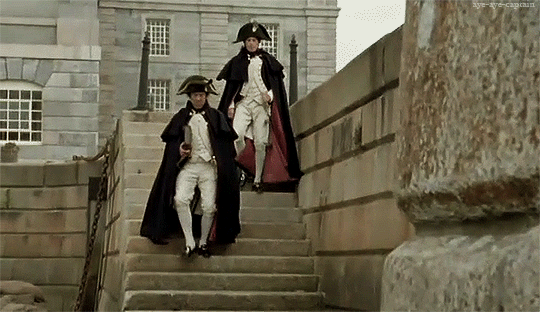
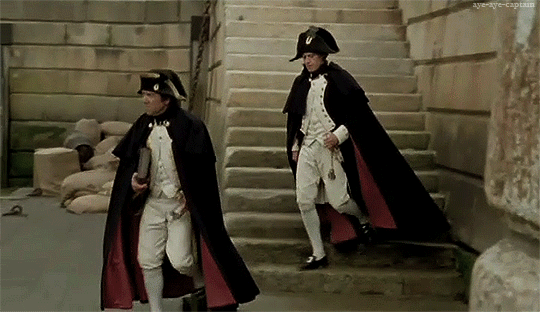
Looking majestic af | Horatio Hornblower & Edward Pellew | Hornblower (The Frogs and The Lobsters)
#hornblower#horatio hornblower#edward pellew#ioan gruffudd#robert lindsay#hornblower/pellew#hornblower series#age of sail#perioddrama#Hornblower: The Frogs and The Lobsters#periodedit#perioddramasource#naval officer#age of sail media#naval history#aye-aye-captain gifs#historical fashion#perioddramaedit
381 notes
·
View notes
Text
New shirts & handkerchiefs
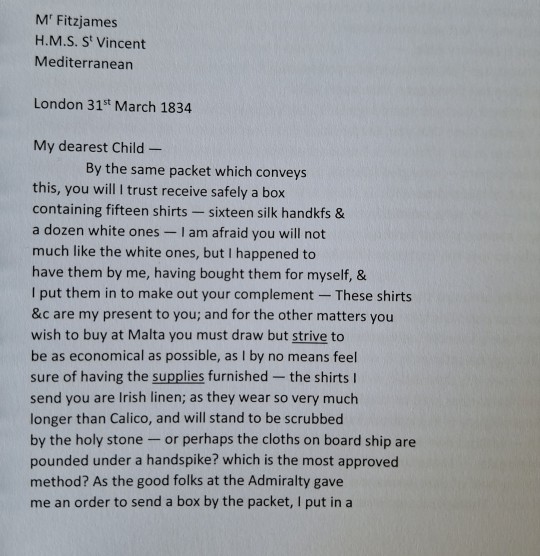
Robert Coningham took such good care of his dearest boy, making sure he had enough clothes and didn't have to buy them abroad.
#james fitzjames#royal navy#naval history#historical men's fashion#1830s fashion#historical clothing
50 notes
·
View notes
Text
I'm so emotional over the Franklin Expedition daguerreotypes at auction that I don't know if I can even make fun of their 1840s hairstyles, which are more visible than ever in the high resolution images (which are better than anything SPRI ever released, as Logan Zachary pointed out).
But. Edward Couch and macassar oil and/or bear's grease or whatever product he has lmao.

I have seen this in many other mid-19th century daguerreotypes: so much styling product his hair gleams and is literally sculpted into shape. (I have also previously written about Dr. Stanley's 1840s juvenile delinquent hairstyle). Along with the low inseam and footstrap on trousers, it seems to be one of those things that rarely makes it into historical costume dramas.
The Franklin daguerreotype images are also high resolution enough that you get a better view of their wonderful black stocks tied with bows. It's an easy look but the bow gives it a certain elegance—Fitzjames and Goodsir have particularly good examples of stocks. As I understand it almost any black stock was acceptable per Royal Navy regs for a long time, allowing the 19th century officer a certain degree of fashion expression changing with the times.
I love Frederick William Beechey's portrait circa 1822 in pattern 1812 uniform (NMM):

Another great polar look! (Yes Beechey like Beechey Island, which he named after his father).
#franklin expedition#1840s#fashion#hairstyles#historical hairstyles#royal navy#dressed to kill#early victorian era#polar#edward couch#frederick beechey#1820s#neckwear#romantic era#naval history
72 notes
·
View notes
Photo
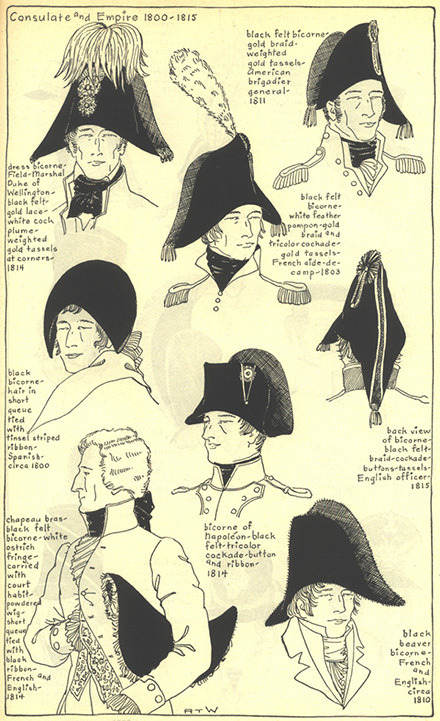
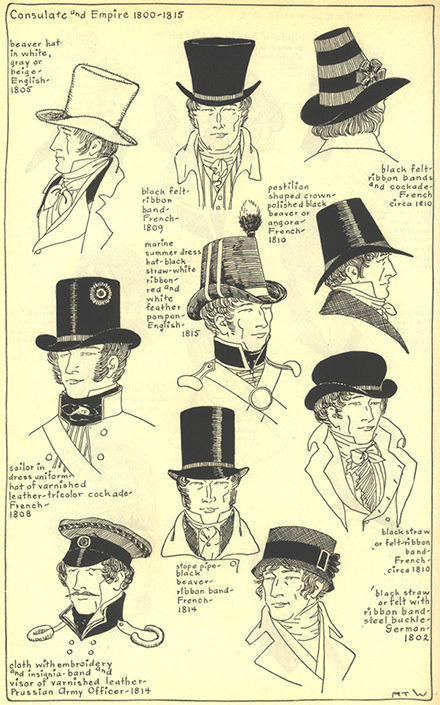
Hat designs at sea and ashore between 1800 and 1815, French and English
#naval art#historical fashion#hats#sea and land#army#navy#civilian#1800-1815#napoleonic wars#age of sail
320 notes
·
View notes
Text



Drew my new DnD character this weekend! Her name is Kiaran and she comes with ACCESSORIES. She's spent most of her time (since escaping the oppressive underdark) at sea so of course I had to give her a fabulous BOAT CLOAK and COOL HAT.
Our DM has come up with a darker, more modern setting than standard DnD so I am excited to explore that.
#my art#drow bard#yes she has red bottomed shoes because they look COOL#boat cloaks are my newest naval fashion obsession#Kiaran Baenett
74 notes
·
View notes
Photo

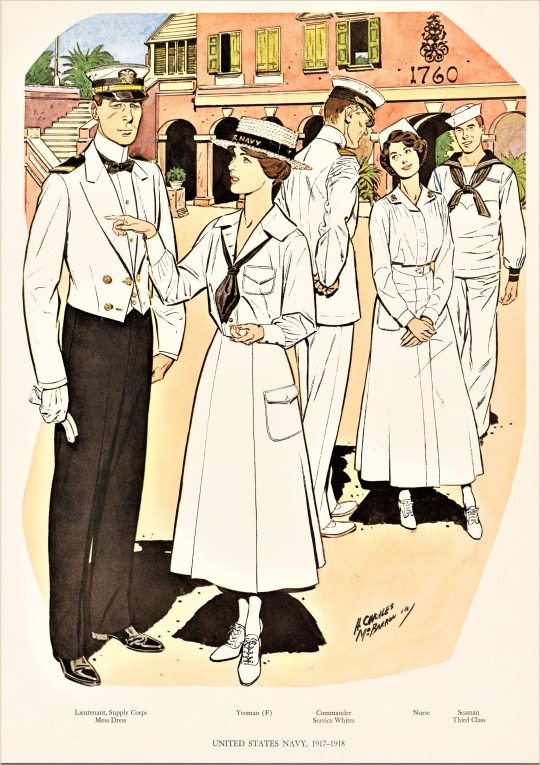
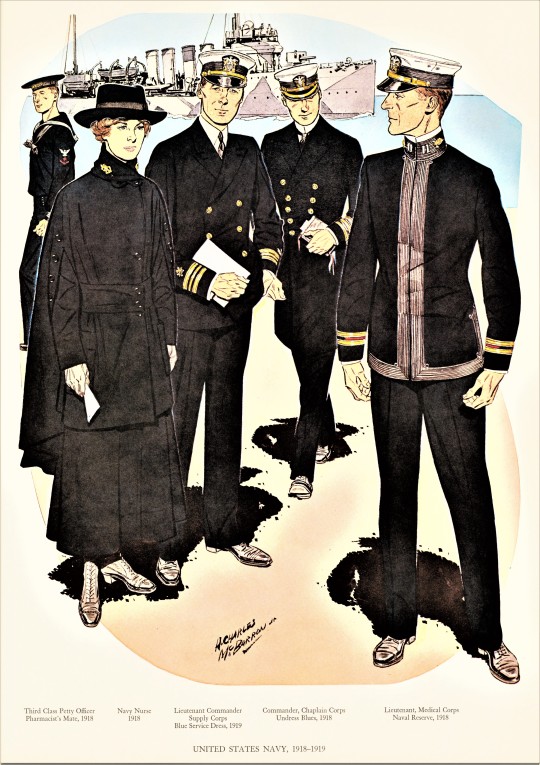


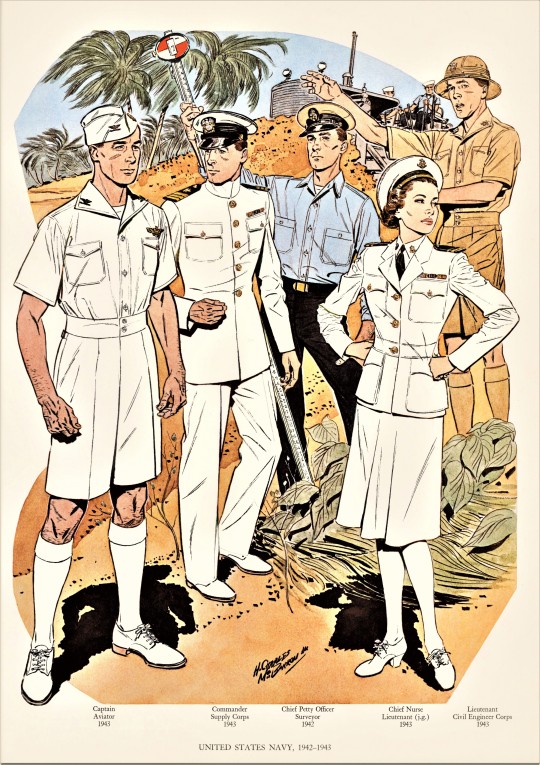
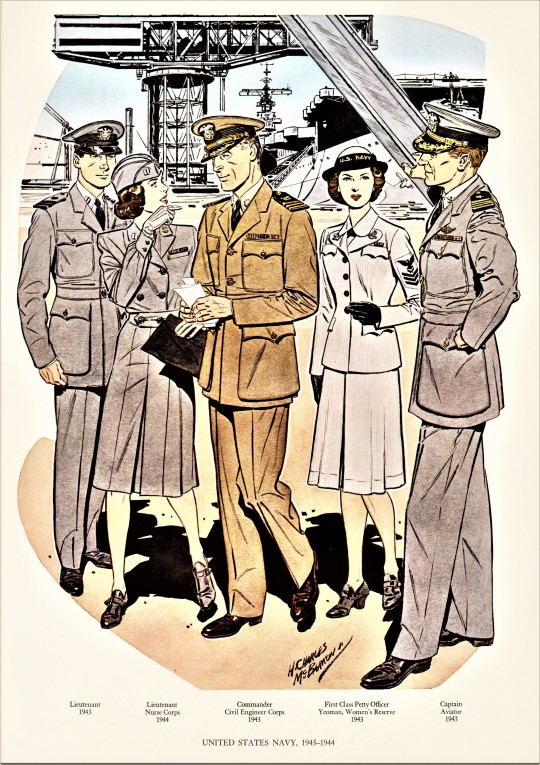


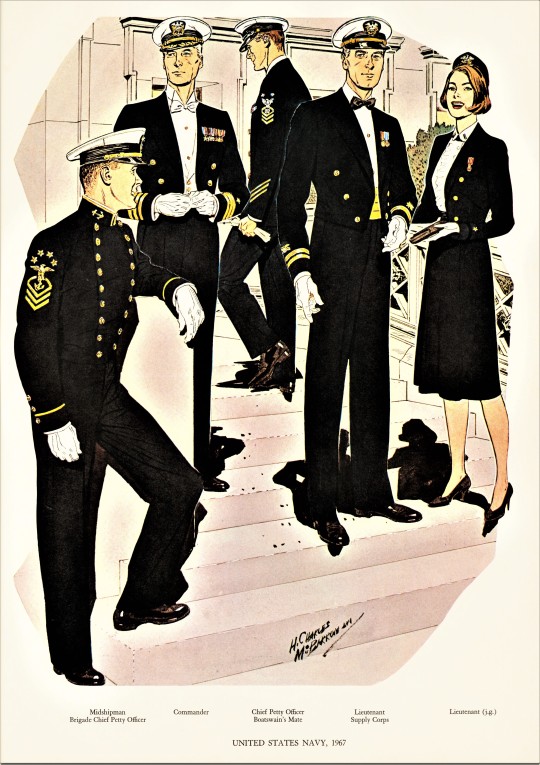
A Veteran's Day Fashion Friday
We commemorate Fashion Friday Veteran’s Day with a few plates of U.S. Navy uniforms from WWI and Armistice Day (the original Veteran’s Day) to 1967, the date of the publication of the plates in the portfolio set Uniforms of the United States Navy 1900-1967 published in 1967 by the Naval History Division of the U.S. Office of the Chief of Naval Operations. The portfolio consists of 12 large color lithographs created by noted military illustrator H. Charles McBarron, showing the intricate details that went into each iteration of the Navy uniform.
Included with the plates is a detailed text describing each uniform by U.S. Naval historian James C. Tily. Each text breaks down the particularities and differences of the uniforms for different ranks of the time, including Captains, Lieutenants, Midshipmen, and more.
View another post from this set.
View more Veteran’s Day posts.
View more Fashion Friday posts.
#Veteran's Day#holidays#Fashion Friday#military uniforms#naval uniforms#U. S. Navy#Uniforms of the United States Navy 1900-1967#Uniforms of the United States Navy#H. Charles McBarron#James C. Tily
104 notes
·
View notes
Text


Officers Uniform of the Huerta Mexican Navy dated to 1914 on display at the National Museum of the Revolution in Mexico City, Mexico
There were few naval engagements during the Mexican Revolution between the Huertistas and Constitutionalists. The main areas of naval conflict during the revolution was off Topolobampa on the west coast between gunboats as the Huerta government had blockaded the port.
Photographs taken by myself 2023
#art#uniform#fashion#naval history#mexican revolution#mexico#mexican#20th century#national museum of the revolution#mexico city#barbucomedie
2 notes
·
View notes
Text

#The Adventure of the Naval Treaty#mystery#illustration#art#black and white#dark academia#Victorian#Sidney Paget#Arthur Conan Doyle#Sherlock Holmes#men's fashion
4 notes
·
View notes
Text
New sailor suit! Hell yes!





US navy uniform. (Year is yet to be determined)
Cost me around 25usd
Good quality. Wool. Includes trousers.
Hat is missing (so I got a discount). Some of the threadwork was discolored/faded. One button was broken (I believe I have a replacement in my stash). Drawstring was knotted and torn (was removed and replaced). Zipper on right-hand pocket was corroded and non-functional (I believe it was brass. Regardless, it had to be taken out). Note: None of the removed pieces were thrown out. I'm not an animal. I'm a hoarder.
#me#my face#my post#history hyperfixation#uniform#us uniform#sailor suit#sailor middy#navy uniform#us navy#uniform collecting#naval clothing factory#my collection#uniform collector#historical fashion#military fashion#whoever the original owner of this was was a very small man#also the amount of buttons on these trousers is insane#but they are cute so...#the trousers need a little tightening around the waist#but that's because of my tboy hips#so I'll just stitch in some side pleats because i don't want to remove any material#nautical hyperfixation
4 notes
·
View notes
Text

so, uh, watercolours, climbing exercises, and singing with friends?
#ollie considers#somehow he manages to be forward thinking in his ass-backwardsness#john irving#this is from uh. dressed to kill: British naval uniform masculinity and contemporary fashions
3 notes
·
View notes
Text

Tintype of a group of barefoot sailors at ease, c. 1870s
#I love images like this where there's such a jolting contrast between modern-looking elements and very period-specific elements#like center front guy's casual pose and t-shirt wouldn't be out of place on a modern man but then MASSIVE MUTTONCHOPS#and his buddy on the left—did this guy straight up rip the sleeves off his naval uniform?! punk's not dead... punk's not even born yet#19th century#19th century men#19th century fashion#sailors#men's fashion#fashion history#historical fashion#19th century photography#tintype#ferrotype#1800s#1870s
1K notes
·
View notes
Text






Costume details | Hornblower
#hornblower#hornblower series#horatio hornblower#edward pellew#archie kennedy#william bush#age of sail#perioddrama#Hornblower: Duty#hornblower: retribution#periodedit#perioddramasource#naval officer#age of sail media#naval history#perioddramaedit#historical fashion#aye-aye-captain gifs#historical costuming#i kinda tried to go by rank ..kinda#costume details
190 notes
·
View notes
Text
1850s Naval Officer
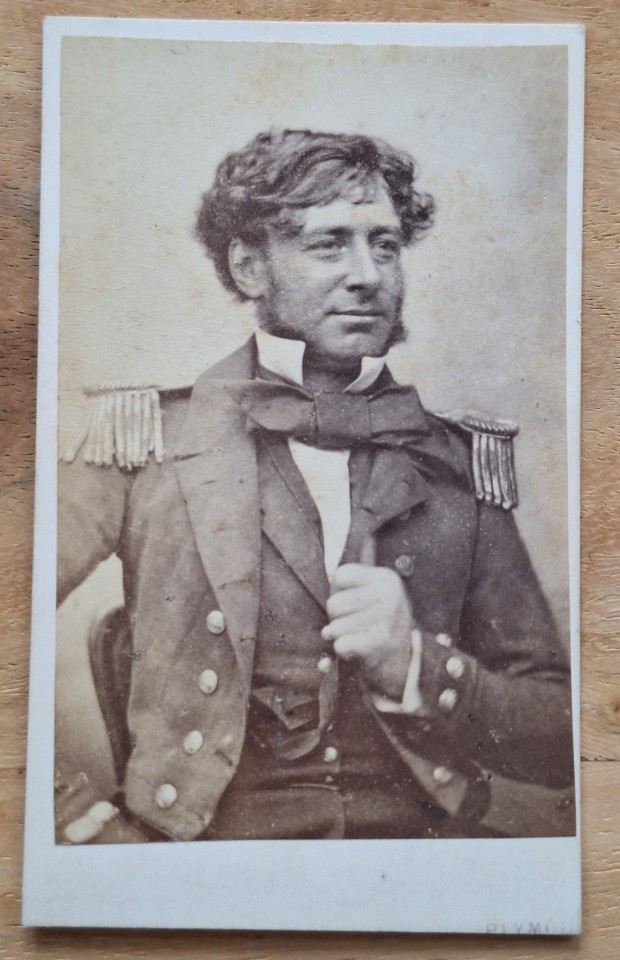
Is his tye miwackulous enough, @clove-pinks ?
I acquired a small collection of carte de visites of Naval Officers and this charming gentleman features 5 times at different stages of his career. On the back of the above portrait it says "29 years" old.

#royal navy#historical men's fashion#fashion history#naval history#victorian#1850s#1860s#early photography#carte de visite
71 notes
·
View notes
Text
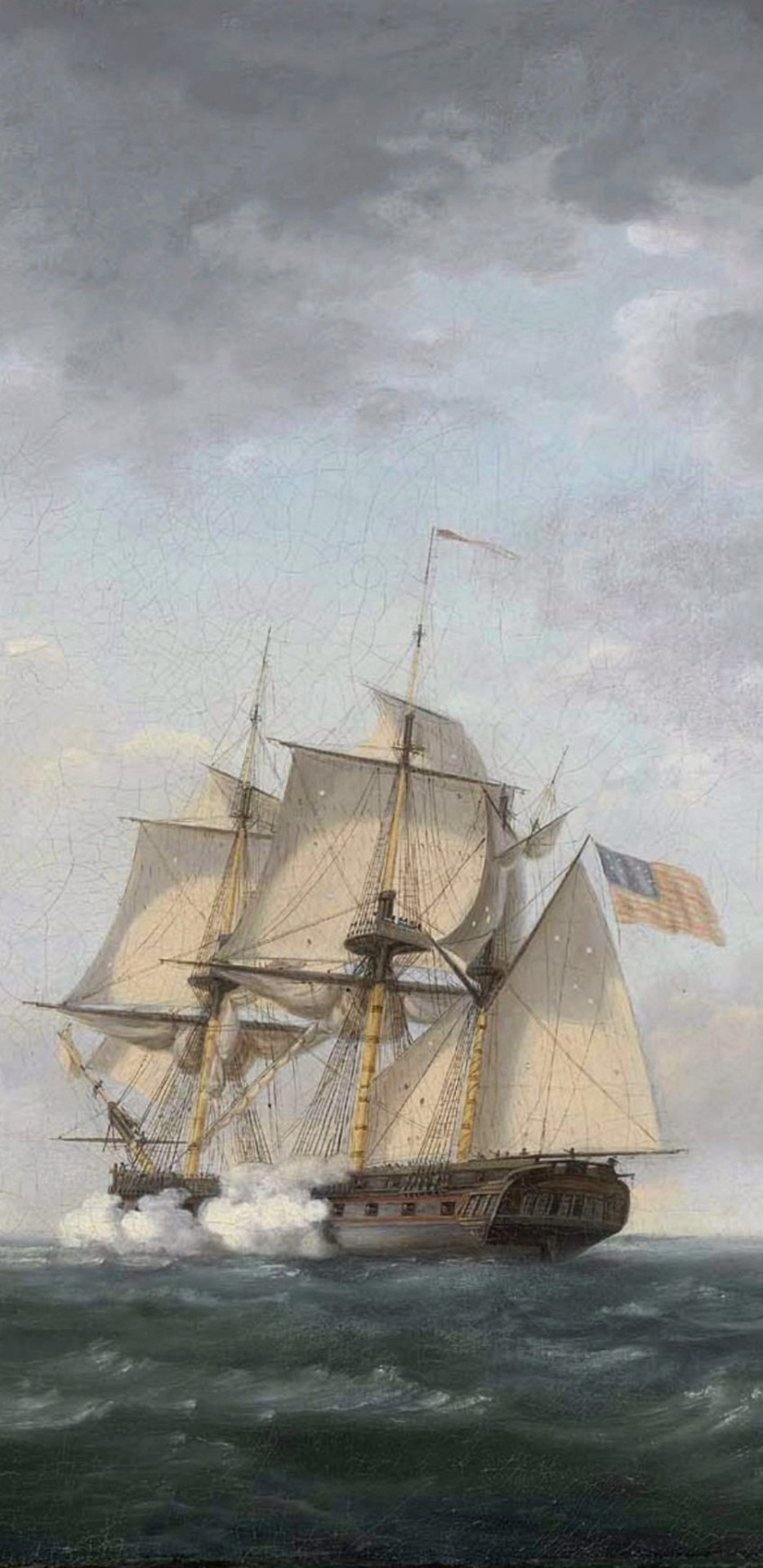
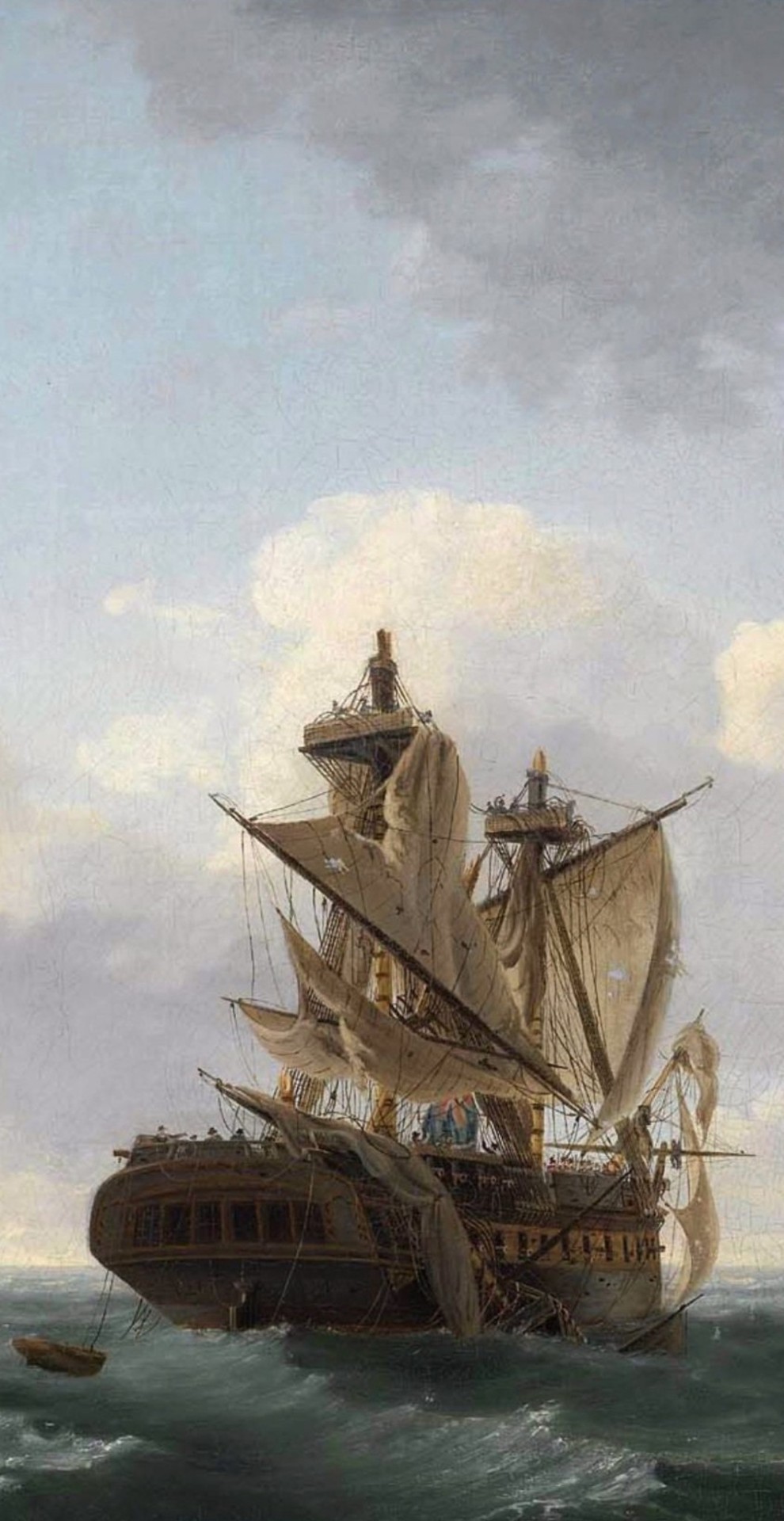
In early 1812, months before the outbreak of war, two captains of frigates from rival navies met in Norfolk. One was Stephen Decatur, who held the unofficial rank of commodore in the United States Navy and who was in command of USS United States. With him was the British John Surman Carden, in command of the crack new 38-gun frigate HMS Macedonian. The two socialised frequently during Carden’s stay in Norfolk, and Carden often dined with Decatur and his wife. The two officers took a liking to each other, bonding primarily through discussion of their beloved frigates. While United States was by far the slowest of the three heavy frigates with the nickname ‘Old Wagon’, she was still a prestigious command as one of the most powerful frigates in the world and currently carrying a slightly heavier armament than her sisters. Macedonian was considered an exceptionally fast frigate, and her first lieutenant, David Hope, considered her to be one of the best-trained frigates in gunnery in the world. It was reported that during one of Carden and Decatur's discussions they had joked about making a wager over a beaver hat on the outcome of a prospective contest between their two frigates.
— Nicholas James Kaizer, Revenge in the Name of Honour: The Royal Navy’s Quest for Vengeance in the Single Ship Actions of the War of 1812
Engagement between the ‘United States’ and the ‘Macedonian’ (details) by Thomas Birch, 1813. (Museum of Fine Arts, Boston)
When Carden and Decatur met again, 500 miles south of the Azores, it was an American victory, with the heavier armament of United States making the difference. Her longer, 24-pound shot proved decisive, inflicting much more damage than Macedonian’s 18-pound shot. At closer range, the Americans’ twenty-four 42-pound carronades devastated Macedonian, who carried only fourteen 32-pounders. Carden’s ship was nearly dismasted and became unmanageable, with great loss of life. Over 100 dead, dying, and wounded men were strewn near her wrecked rigging and canvas.
When Carden surrendered at last, some of his men cried and others were prepared to fight the American prize crew (the British sailors had also broken into the spirit stores, adding to the chaos). Nonetheless:
Decatur and Carden greeted each other as friends. The American refused to accept Carden’s sword and praised his gallantry, but he could tell that Carden was in a deplorably melancholic state. Carden admitted that he was devastated at losing his ship, believing that he was the first British captain to do so. Decatur’s attempts to console him by informing him that Dacres [of HMS Guerriere] had that unfortunate distinction only partially mollified Carden. He had still lost a ship in one-on-one combat, and Macedonian became the first and only British frigate to be brought into an American port as a prize.
— Nicholas James Kaizer, Revenge in the Name of Honour: The Royal Navy’s Quest for Vengeance in the Single Ship Actions of the War of 1812
No word from Kaizer if the bet for a beaver hat was ever called in by Stephen Decatur. For those unfamiliar with the term, it refers to a hat made from highly processed beaver fur that has been felted, formed, and brushed to a silken sheen, like the top hat worn by this gentleman in an 1812 fashion plate (Flickr):
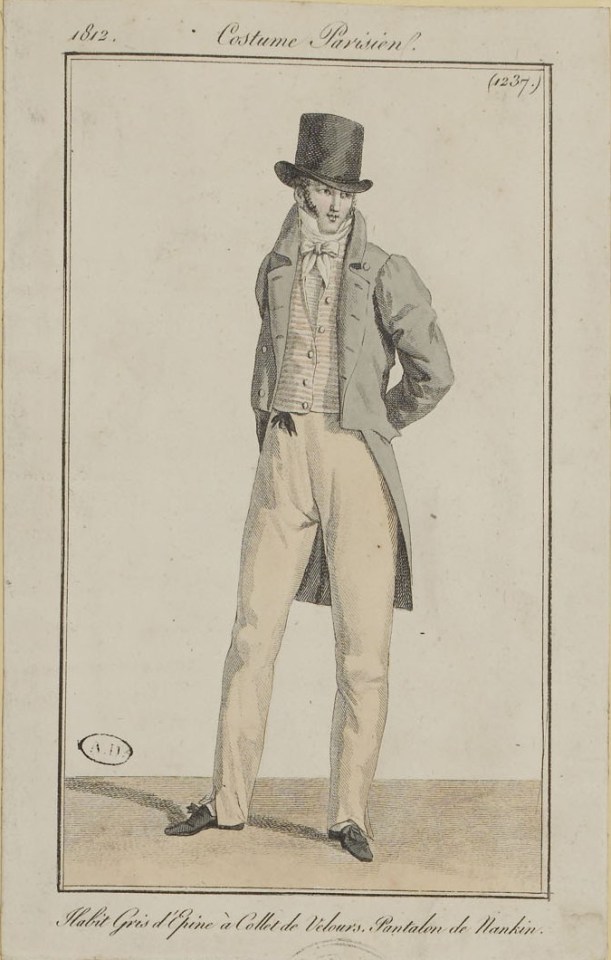
Beaver hats were also waterproof, and naval cocked hats were made out of the same material.
#War of 1812 Wednesday#war of 1812#age of sail#naval battle#naval history#age of fighting sail#uss united states#hms macedonian#royal navy#united states navy#military history#frigate#stephen decatur#us navy#john surman carden#thomas birch#naval art#maritime history#beaver hat#historical men's fashion#1810s#revenge in the name of honour#also can't believe we had an old ironsides and an old wagon#1812
32 notes
·
View notes
Text
Shipshape and Bristol Fashion
The term "Shipshape and Bristol Fashion" dates back to the 17th and 19th centuries and Shipshape initially refers to everything in everything in its correct place.
Bristol Fashion refers to ships sailing in and out of Bristol Harbor in Bristol, England, a major port city a few miles inland at the mouth of the River Avon. At the time, Bristol Harbour had the second highest tidal range in the world, varying by more than 9m/30 feet between low and high tide.
Over the time, the two terms became conflated because as the tide receded, ships would run aground and tip their keels to one side. Unless everything was stowed or properly secured, chaos reigned and cargo spoiled, not longer shipshaped.
To survive this inevitable stranding, ships had to be sturdily built and the goods they carried safely stowed. Accordingly, the ships that withstood this challenge were called "Shipshape and Bristol Fashion".
54 notes
·
View notes